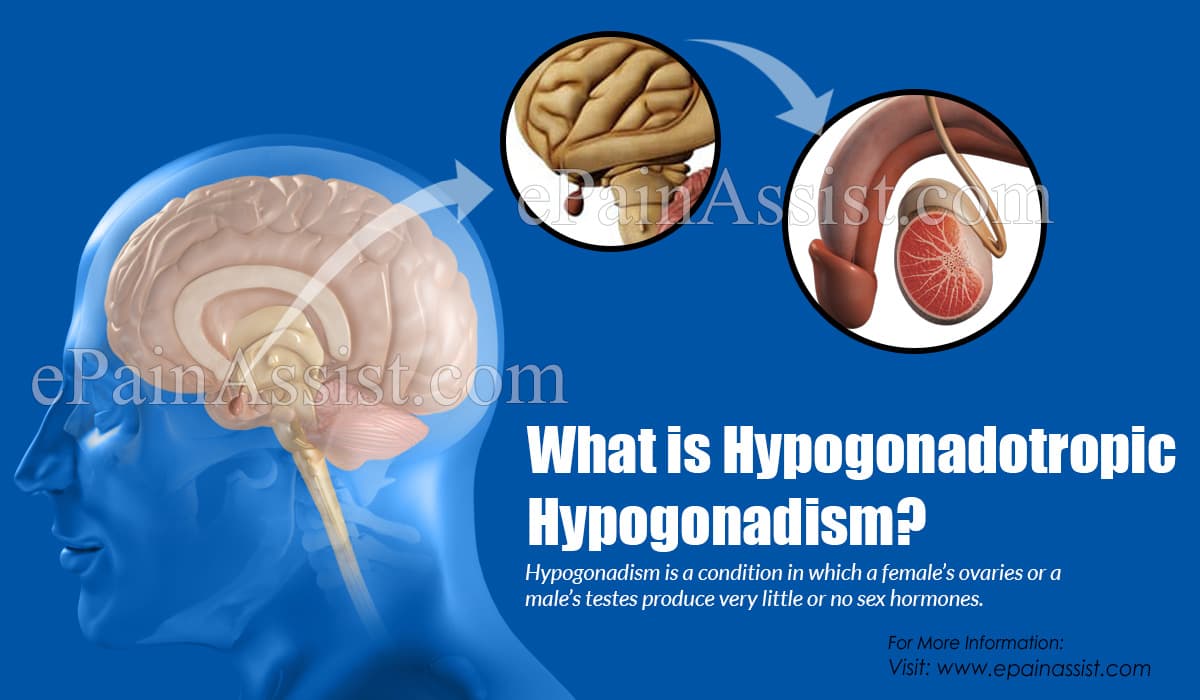What is Hypogonadotropic Hypogonadism?
Hypogonadism is a condition in which a female’s ovaries or a male’s testes produce very little or no sex hormones. Hypogonadotropic Hypogonadism (HH) is a type of hypogonadism which occurs due to a problem with the hypothalamus or pituitary gland. Hypogonadotropic Hypogonadism is also known as Gonadotropin deficiency or Secondary Hypogonadism.

What are the Causes of Hypogonadotropic Hypogonadism?
Hypogonadotropic Hypogonadism is caused due to the lack of hormones, which are normally responsible for stimulating the ovaries or testes. These hormones include follicle stimulating hormone (FSH), gonadotropin-releasing hormone (GnRH), and luteinizing hormone (LH). The hypothalamus in the brain produces GnRH, which stimulates the pituitary gland to release LH and FSH. These hormones direct the male testes or the female ovaries to release hormones, which lead to normal sexual development in puberty. Any disturbance or change in this hormone release chain results in a lack of sex hormones, which prevents normal sexual maturity in children and normal functioning of the testicles or ovaries in adults.
Some of the causes of Hypogonadotropic Hypogonadism are genetic defect, severe stress, poor nutrition, rapid weight loss or gain, drug abuse, and chronic inflammation or infections. Hypothalamus or pituitary gland damage caused due to injury, surgery, tumor, radiation, infection, certain medical conditions like iron overload, high doses or long-term use of steroid medicines, and high prolactin level can also trigger Hypogonadotropic Hypogonadism. Kallmann syndrome is an inherited kind of Hypogonadotropic Hypogonadism. Some patients with this condition also suffer from anosmia.
What are the Symptoms of Hypogonadotropic Hypogonadism in Children & Adults?
Short stature, lack of development at puberty, and inability to smell are some of the common signs and symptoms of Hypogonadotropic Hypogonadism in children. Symptoms like lack of breast development and menstrual periods in girls, and no development of sexual characteristics, like testes and penis enlargement, facial hair, and deepening of the voice in boys are also experienced by the patients suffering from Hypogonadotropic Hypogonadism.
Loss of libido in men, amenorrhea in women, infertility, decreased interest in activities, drop in energy levels, weight gain, mood changes, and loss of muscle mass in men are the symptoms experienced by adults with Hypogonadotropic Hypogonadism.
How is Hypogonadotropic Hypogonadism Diagnosed?
The doctor can physically examine the patient and ask about their symptoms for the purpose of diagnosing Hypogonadotropic Hypogonadism. Other tests which may need to be conducted are MRI of the pituitary gland and hypothalamus, blood tests for measuring the iron level and hormone levels like LH, FSH, TSH, estradiol, testosterone and prolactin, genetic testing, and LH response to GnRH can be done to diagnose hypogonadotropic hypogonadism.
How is Hypogonadotropic Hypogonadism Treated?
Treatment of Hypogonadotropic Hypogonadism depends on its cause, but may include GnRH injections and HCG injections. In males, injections of testosterone, testosterone gel and slow-release testosterone skin patch can be used to treat Hypogonadotropic Hypogonadism, while progesterone and estrogen pills or skin patches are used for treating hypogonadotropic hypogonadism in females.
What is the Prognosis for Hypogonadotropic Hypogonadism?
The appropriate hormone treatment may cause the onset of puberty in children and can restore fertility in adults suffering from hypogonadotropic hypogonadism. If hypogonadotropic hypogonadism occurs after puberty or in adulthood, the symptoms often tend to improve with treatment.
What are the Complications associated with Hypogonadotropic Hypogonadism?
Health problems and other complications, which can result from Hypogonadotropic Hypogonadism include: low bone density, fractures in later life, delayed puberty, early menopause, infertility, low self esteem, decreased libido, and other sexual problems. Medical attention must be sought when a child does not attain puberty on the right time, a woman aged less than 40 years experiences menopause, and a man experiences decreased interest in sex and loss of armpit or pubic hair.
- MedlinePlus – Hypogonadotropic Hypogonadism: https://medlineplus.gov/genetics/condition/hypogonadotropic-hypogonadism/
- Mayo Clinic – Hypogonadotropic Hypogonadism: https://www.mayoclinic.org/diseases-conditions/hypogonadism/symptoms-causes/syc-20352943
- National Institute of Child Health and Human Development – Hypogonadotropic Hypogonadism: https://www.nichd.nih.gov/health/topics/hypogonadism
- Cleveland Clinic – Hypogonadotropic Hypogonadism: https://my.clevelandclinic.org/health/diseases/15637-hypogonadotropic-hypogonadism
- Endocrine Society – Hypogonadotropic Hypogonadism: https://www.hormone.org/diseases-and-conditions/hypogonadotropic-hypogonadism
- PubMed Health – Hypogonadotropic Hypogonadism: https://www.ncbi.nlm.nih.gov/books/NBK1334/
Also Read:
